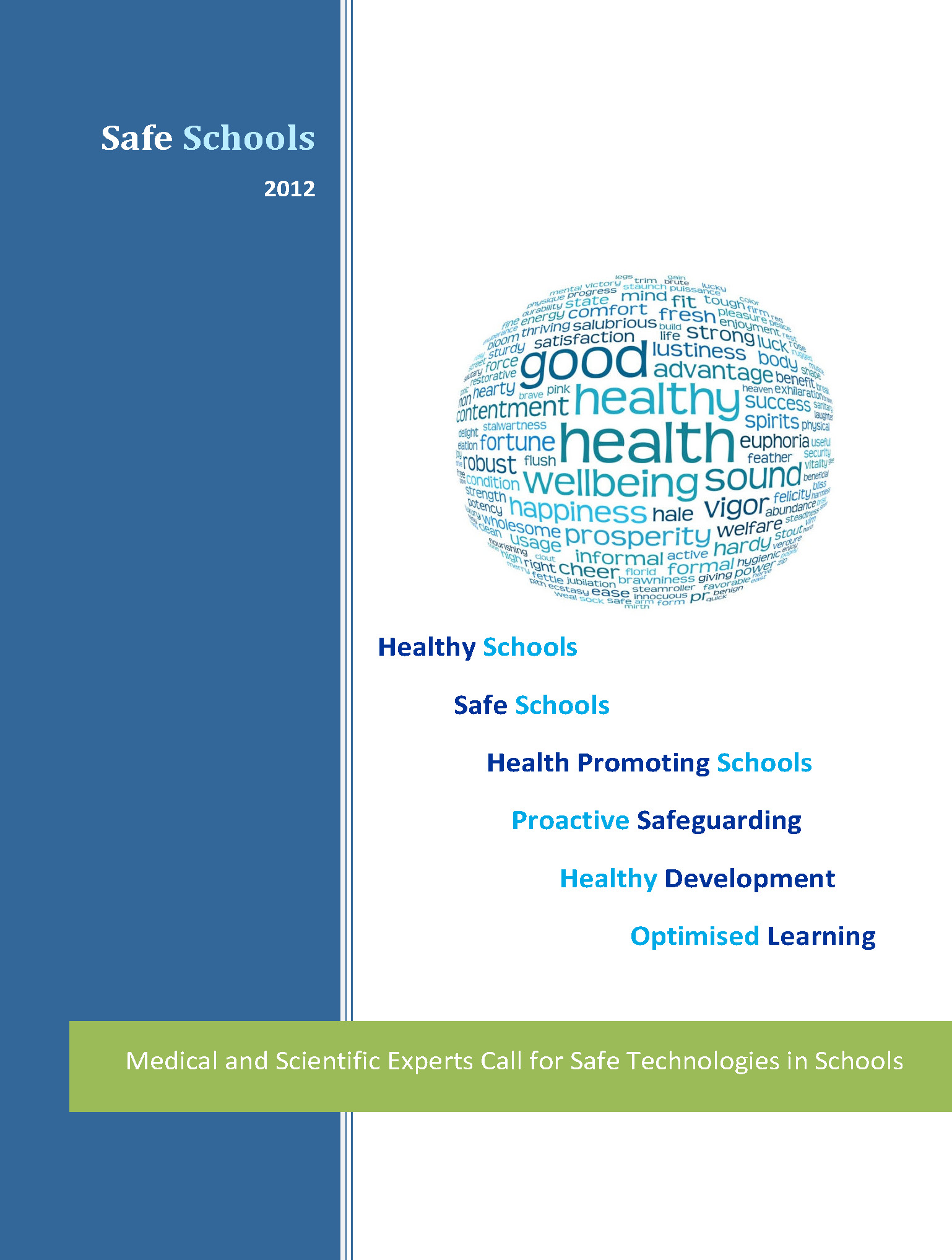Wi-Fi in Schools and the FCC (Newly Revisited) Guidelines
 A parent objecting to wi-fi installed at Mountain Avenue Elementary addressed the Glendale Unified School District board last week. As the Glendale News-Press reported, it was on the same night “school officials announced plans to boost bandwidth at all the district’s schools by the end of November to improve wireless Internet network usage.”
A parent objecting to wi-fi installed at Mountain Avenue Elementary addressed the Glendale Unified School District board last week. As the Glendale News-Press reported, it was on the same night “school officials announced plans to boost bandwidth at all the district’s schools by the end of November to improve wireless Internet network usage.”
Within the News-Press article are references from a school district manager and a board member about the district’s adherence to 1) FCC guidelines, 2) the low levels of wi-fi radiation.
Let’s start with the FCC guidelines. The Federal Communications Commission is not a public health agency. Its radio frequency exposure guidelines were developed in consultation with telecommunications industry groups as well as federal public health agencies and were based on “thermal” – that is, tissue heating – effects. After years and years of public outcry all over the country over cell tower installations, cell phones, city-wide wi-fi proposals, and the lesser-known but compelling concerns of radio-frequency technicians and installers, the FCC opened a review of its guidelines issued in 1996 and issued a Notice of Inquiry with comments due November 18.
Next, keep in mind that the “low levels of wi-fi radiation…below the level of concern” will be present in the school environment at all times, as long as wi-fi systems are turned on, meaning that while the exposure level is low, it is also constant. The same is true in home and commercial settings, as long as these devices are on. I unplug the wireless router when it is not being used. The FCC Notice of Inquiry has some interesting qualifications about “sum exposure”:
While it is reasonable to sum exposure due to all well-characterized sources, the Commission sees no practical method to quantitatively determine compliance for multiple RF sources that have no fixed physical relationship to one another. Examples where a physical relationship would not be well defined are between a fixed wireless base station and a mobile or portable device, or between two mobile or portable devices…(from page 33655 of the Notice of Inquiry in the Federal Register/Vol 89. No. 107)
Translating this into a GUSD elementary school classroom means: While the wi-fi transmitter emissions may fall within FCC guidelines, there is no way for the FCC to guarantee that exposure limits won’t be exceeded for any school child using a tablet which is simultaneously emitting radiowaves while communicating with the wi-fi transmitter. The student may be at a distance from the wi-fi device, but is just inches away from their own tablet. Further, the student is also being exposed to their classmates’ tablets’ radio waves, cellphone signals, teachers’ laptop wireless transmitters, the smart meters’ radio waves at the end of the building, and the radiation of all other devices emitting wireless signals in the immediate environment. Who is measuring all this? Clearly no one, as the FCC admits above.
Continued use of the Commission’s present exposure limits is currently supported by statements from significant qualified expert organizations and governmental entities. Some critics of the Commission’s exposure limits have contrasting opinions, and it is aware of the general concerns raised by some members of the public…(from Page 33660, ibid.)
There are “significant qualified experts” that disagree with the Commission’s present exposure limits, including researchers, university professors and professional groups. While a full list of public comments (the “general concerns raised by some members of the public”) can be found by searching the FCC filings page (select Search for Filings and type in 13-84), Dr. Joel Moskowitz has separated out and linked to several experts’ comments in this blog post.
Moskowitz also posted a collection of letters and comments earlier this year about the LAUSD’s push to install wi-fi.
Sunroom Desk’s earlier post on this subject cites a different filing number – more than one Notice of Inquiry was issued on this subject, and the original deadline was extended because of the government shutdown. More news when the FCC responds.
No comments:
Post a Comment